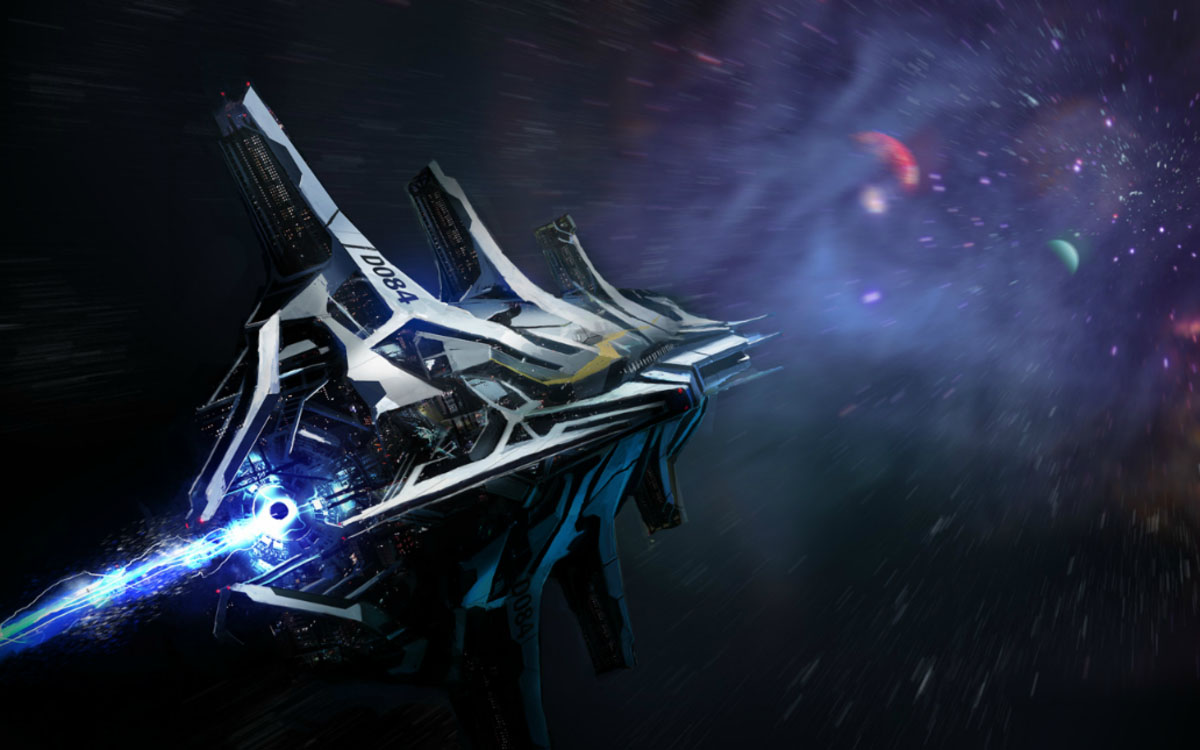spaceships, now with black hole reactors?

Once upon a time, we took a look at why creating black holes in particle colliders and using them to generate energy for our power grids was fraught with problems. However, if at sometime in the future we could scale up our lasers and use them to create a black hole with a mass energy equivalent of a million tons, relativistic rocketry would be within our reach. Artificial black holes that small would evaporate away in about a century or so while radiating so much energy, they could power a spacecraft to near light speed in just a decades. Or at least that’s the big idea advanced in a paper by Louis Crane and Shawn Westmoreland, mathematicians with a passion for theoretical physics and inspired by science fiction novels which sought to provide exotic power sources for highly advanced alien civilizations crisscrossing the cosmos in giant spacecraft at their leisure.
The math seems to be in their favor. While the resulting black hole would require a 8.99 × 1027 J burst from a laser array and be approximately the size of an atom across, it would be just big and stable enough to feed on matter around it, creating an accretion and a whole variety of energetic phenomena which could be harnessed to drive a spaceship forward. Whether collecting gamma rays coming from the accretion process or antimatter and matter particles created in the turbulent environment around the tiny black hole annihilating each other, all it takes is the right design to harness all this power and convert it into exhaust.
Since this is all happening on an atomic scale, it’s deceptively easy to think that you’d just get a small trickle of energy, but remember, you’re working with millions of tons of swirling energy. And since its radius is so small, fuel close to the event horizon would be experiencing stunning gravitational tides. Once you’ve spent the black hole’s usefulness, you could just throw it out into empty space where it would probably evaporate into nothing or take eons to grow into the size category we would expect from a stellar object.
Though before we start climbing into our very own black hole powered spacecraft, there are a few problems to resolve. First is how to create the initial massive burst of energy. Crane and Westmoreland propose a nuclear laser array which they concede would have to be of immense proportions, but could be powered up by a black hole of their creation to make the next one far more easily. The second issue is black hole charge. Inside the object, energy would be so dense, it would pass through even the densest ordinary matter with about the same ease as we pass through air. Give it some charge and the electrostatic repulsion could propel it into space or right through a planet. When traveling in a spacecraft, you don’t necessarily want your power source to make a sudden break for it so the black hole itself would have to be static and completely neutral as far as charge. To not only create a gravitational ghost, but to do it according to very specific parameters would take precision as well as the kind of advanced technology we could only conceive as a list of equations for now.
See: Louis Crane, & Shawn Westmoreland (2009). Are Black Hole Starships Possible? arXiv: 0908.1803v1





